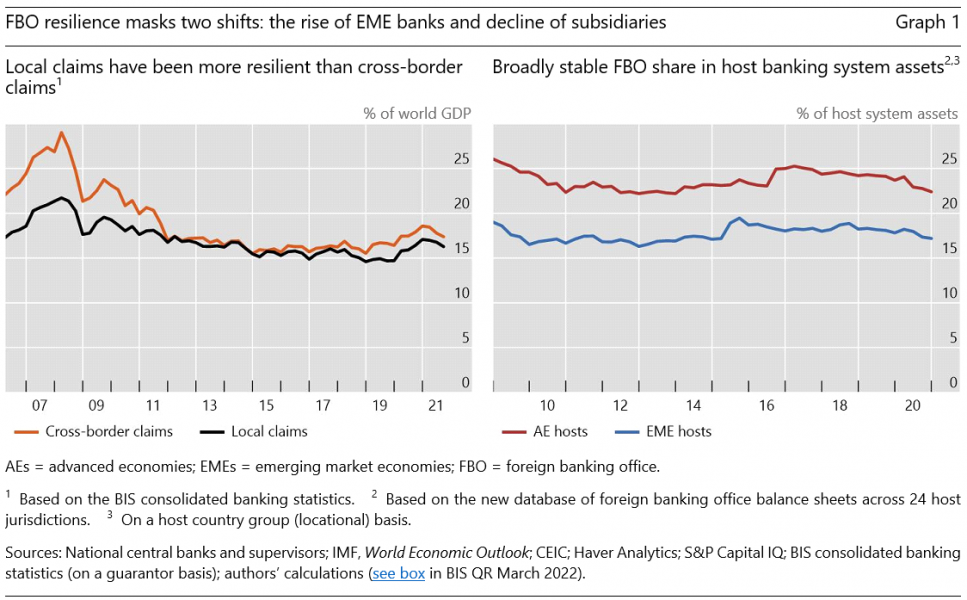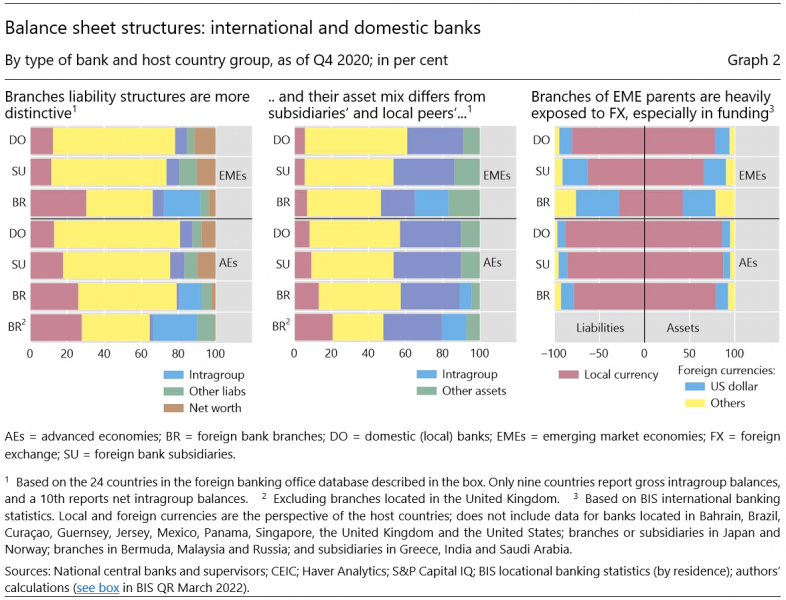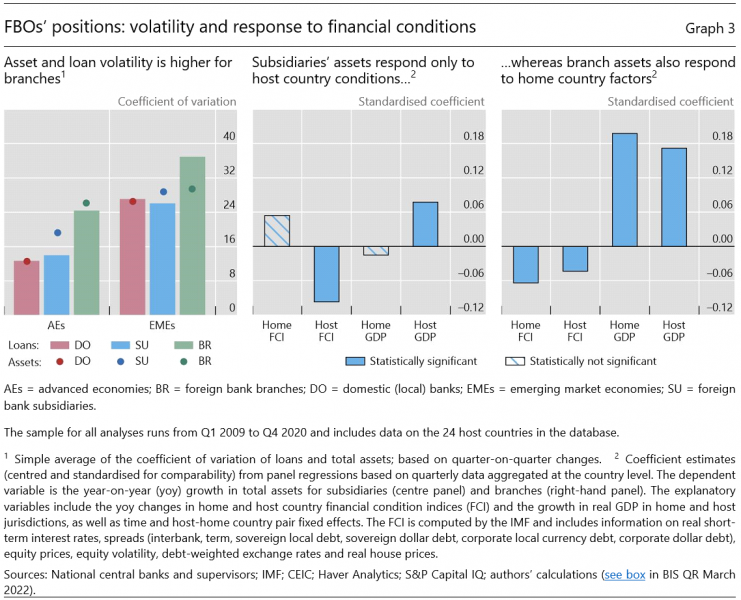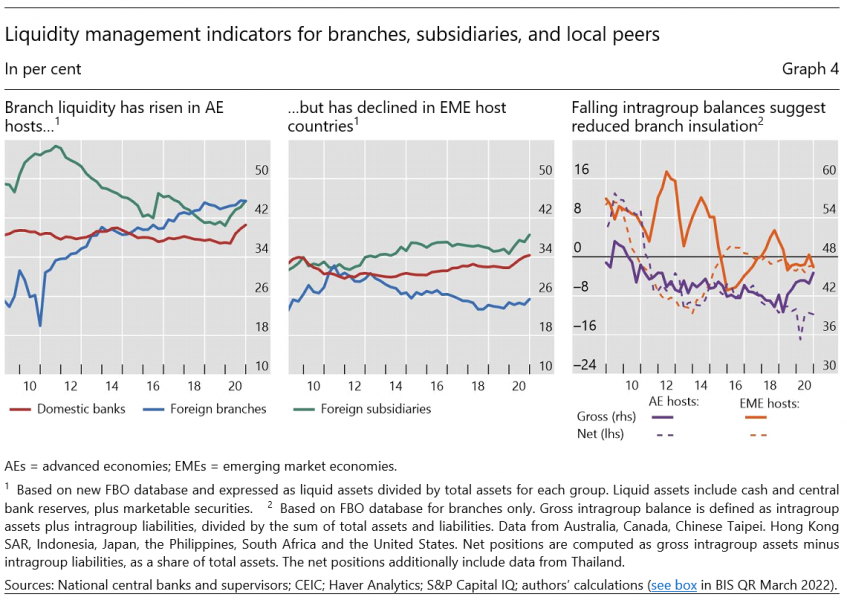References
Aldasoro, I, J Caparusso and Y Chen (2022): “Global banks’ local presence: a new lens”, BIS Quarterly Review, March 2022.
Cetorelli, N and L Goldberg (2011): “Liquidity management of U.S. global banks: internal capital markets in the great recession”, NBER Working Papers, no 17355.
Cetorelli, N and L Goldberg (2012): “Banking globalization and monetary transmission”, Journal of Finance, vol 67, no 5.
Fillat, J, S Garett and A Smith (2018): “What are the consequences of global banking for the international transmission of shocks? A quantitative analysis”, NBER Working Papers, no 25203.
Hills, R, J Hooley, Y Korniyenko and T Wieladek (2015): “International banking and liquidity risk transmission: lessons from the United Kingdom”, Bank of England, Staff Working Papers, no 562.
Turtveit, L (2017): “Branches of foreign banks and credit supply”, Norges Bank Economic Commentaries, no 3.
Wong, E, A Tsang and S Kong (2014): “Implications of liquidity management of global banks for host countries – evidence from foreign bank branches in Hong Kong”, HKIMR Working Papers, no 21/2014.









